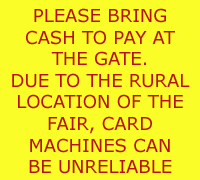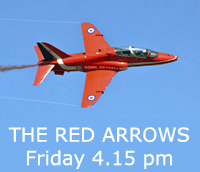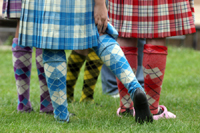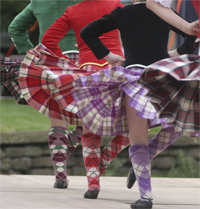Chatsworth Country Fair 2011
Friday 2nd, Saturday 3rd & Sunday 4th September
Highland Dancing
At Queen Mary's Bower. Saturday and Sunday only. Organised by Coleen Hutchison. Assistant Organisers: Iona Goodchild and Heidi MacDonald-Mathers.
SATURDAY: THE COMPETITIONS
Adjudicator - Arlene Ferguson
Pipers - Garry Mills and Steven Watterson
Dances for the Saturday Competitions will be selected from the following:
The Highland Fling, The Sword Dance, Seann Triubhas, Half Hullachan, Scottish Lilt, Flora MacDonald, Sailors Hornpipe, Highland Laddie, Barracks Johnnie.
Prizes: Gold, Silver & Bronze medals will be awarded in each event, and a retention Trophy for the overall winner in each of the Beginner, Novice, Intermediate and Premier classes.
SUNDAY: DEMONSTRATIONS OF HIGHLAND DANCING by The Marlyn Halliday School, The Coleen Hutchison and Heidi MacDonald-Mathers School, and the Sharon Radcliffe School.
Demonstrations commence at 11.00 am, 1.00 pm, 2.30 pm, 3.30 pm
Piper - Garry Mills
A LITTLE DANCE HISTORY
THE HIGHLAND FLING is reckoned to be our oldest national dance, and was inspired by the graceful movements of deer on the hillside. When the dancers hold their arms aloft in this dance they are depicting the antlers of the stag. In the days of long ago, soldiers dancing the Highland Fling had to do so on their battle shield, laid flat on the ground, and that is why the Highland Fling is danced on the spot.
THE SWORD DANCE, another of our oldest Highland dances, is GHILLIE CALLUM (Sword Dance) and this dates back to the eighth or ninth century. The earliest story we have concerning Ghillie Callum is of a duel between Malcolm Canmore and one of Macbeth’s chiefs. King Malcolm killed his opponent, whose sword he laid on the ground placing his own sword on top in the form of a cross. Expressing the joy of victory. King Malcolm is said to have danced round and over the swords to the music of the harp.
SEANN TRIUBHAS (Old Trousers). After the Jacobite Rising of 1745 The Seann Triubhas was created at a time when it was forbidden to wear the kilt or tartan. This was an endeavour of the government to put down Scottish Nationalism with a rigorous hand. Trews were unpopular with the Highlanders who invented a dance with many steps that suggest kicking off the trews or shedding the shackles of English rule from their feet.




